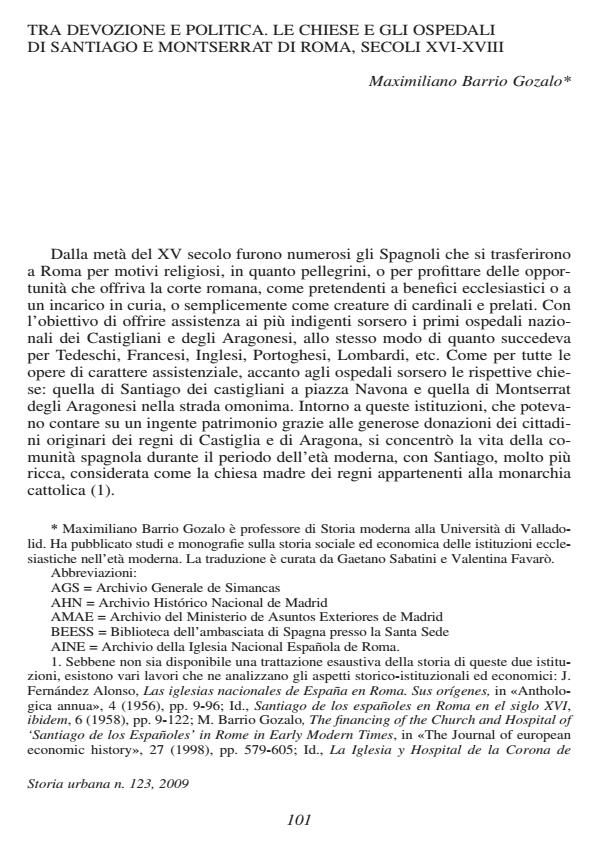Tra devozione e politica. Le chiese e gli ospedali di Santiago e Montserat di Roma, secoli XVI-XVIII
Titolo Rivista STORIA URBANA
Autori/Curatori Gozalo Maximiliano Bariio
Anno di pubblicazione 2009 Fascicolo 2009/123 Lingua Italiano
Numero pagine 27 P. 101-127 Dimensione file 1947 KB
DOI 10.3280/SU2009-123005
Il DOI è il codice a barre della proprietà intellettuale: per saperne di più
clicca qui
Qui sotto puoi vedere in anteprima la prima pagina di questo articolo.
Se questo articolo ti interessa, lo puoi acquistare (e scaricare in formato pdf) seguendo le facili indicazioni per acquistare il download credit. Acquista Download Credits per scaricare questo Articolo in formato PDF

FrancoAngeli è membro della Publishers International Linking Association, Inc (PILA)associazione indipendente e non profit per facilitare (attraverso i servizi tecnologici implementati da CrossRef.org) l’accesso degli studiosi ai contenuti digitali nelle pubblicazioni professionali e scientifiche
Tra devozione e politica: le chiese e gli ospedali di Santiago e Montserrat di Roma, secoli XVI-XVIII - Between devotion and politics. The churches and hospitals of Santiago and Montserrat in Rome (16th-18th cent.) At the end of the Middle Ages the city of Rome saw the foundation of the hospitals and churches of Santiago of the Castilians, located on piazza Navona, and of Montserrat of the Aragonese Nation, settled on the homonymous street. Both of them were affluent institutions, developing an intense welfare and religious action in favour of their nationals. Little by little they became the tangible symbol of the Spanish presence in Rome, provoking the intervention of the Spanish royal power. The study takes advantage of a wide range of archival sources, reconstructing in detail income, expenses and the investments of the two institutions throughout the 16th to 18th centuries.;
Gozalo Maximiliano Bariio, Tra devozione e politica. Le chiese e gli ospedali di Santiago e Montserat di Roma, secoli XVI-XVIII in "STORIA URBANA " 123/2009, pp 101-127, DOI: 10.3280/SU2009-123005